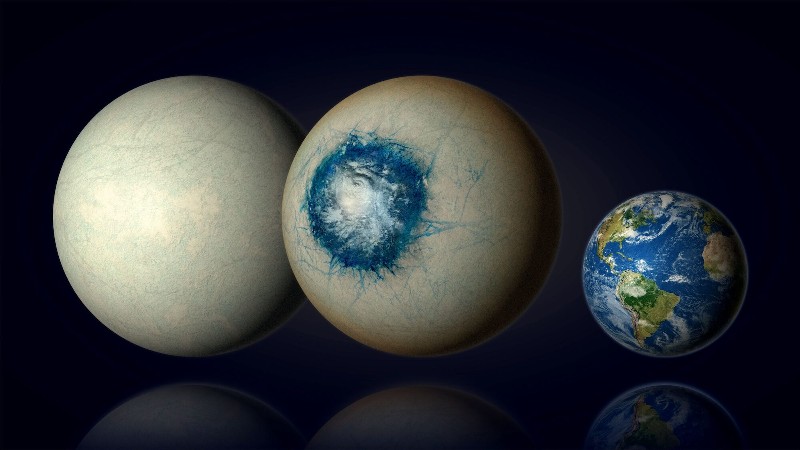A super-Earth exoplanet orbiting a distant star may be covered in ice or water, according to new research. The planet, known as LHS 1140 b, sits in the habitable zone of its star and could potentially harbor an atmosphere and liquid water ocean.
An international team, including University of Michigan astronomer Ryan MacDonald, analyzed data from multiple space telescopes to study LHS 1140 b. Their findings, published in The Astrophysical Journal Letters, suggest this world is not a mini-Neptune as previously thought, but rather a promising candidate for habitability.
A Super-Earth with Surprising Characteristics
LHS 1140 b orbits a red dwarf star about one-fifth the size of our sun, located 48 light-years away in the constellation Cetus. The planet’s position in its star’s “Goldilocks Zone” means it could have temperatures suitable for liquid water on its surface.
“Of all currently known temperate exoplanets, LHS 1140 b could well be our best bet to one day indirectly confirm liquid water on the surface of an alien world beyond our solar system,” said Charles Cadieux, lead author and doctoral student at Université de Montréal. “This would be a major milestone in the search for potentially habitable exoplanets.”
The team’s analysis revealed that LHS 1140 b is less dense than expected for a rocky planet with an Earth-like composition. They estimate that 10 to 20% of its mass could be water, making it a compelling candidate for a water world or ice planet.
Hints of an Earth-like Atmosphere
One of the most exciting aspects of this discovery is the potential presence of an atmosphere on LHS 1140 b. Ryan MacDonald, a NASA Sagan Fellow at the University of Michigan, conducted an atmospheric retrieval analysis suggesting the planet might have a nitrogen-rich atmosphere similar to Earth’s.
“This is the first time we have ever seen a hint of an atmosphere on a habitable zone rocky or ice-rich exoplanet,” MacDonald explained. “Detecting atmospheres on small, rocky world is a major goal from JWST, but these signals are much harder to see than for giant planet atmospheres. LHS 1140 b is one of the best small exoplanets in the habitable zone capable of supporting a thick atmosphere, and we might just have found evidence of air on this world.”
If the planet does have an Earth-like atmosphere, current models suggest it could be a snowball planet with a bull’s-eye ocean about 4,000 kilometers in diameter – half the surface area of the Atlantic Ocean. The center of this alien ocean might even have a comfortable temperature of 20 degrees Celsius.
While these findings are promising, the researchers caution that additional observations with the James Webb Space Telescope (JWST) will be necessary to confirm the presence of a nitrogen-rich atmosphere and search for other gases.
“This is our first tantalizing glimpse of an atmosphere on a super Earth in the habitable zone,” MacDonald said. “Compared to other known habitable zone exoplanets, such as those in the TRAPPIST-1 system, the star LHS 1140 appears to be calmer and less active, making it significantly less challenging to disentangle LHS 1140 b’s atmosphere from stellar signals caused by starspots. Our initial reconnaissance of LHS 1140 b with JWST has revealed this to be perhaps the best habitable zone exoplanet currently known for atmospheric characterisation. While we need more JWST observations to confirm the nitrogen-rich atmosphere, and to search for other gasses, this is a very promising start.”
As astronomers continue to study LHS 1140 b, it may provide unprecedented insights into the potential for life beyond our solar system. This frozen water world, with its possible atmosphere and liquid ocean, represents a tantalizing target in the search for habitable exoplanets.


